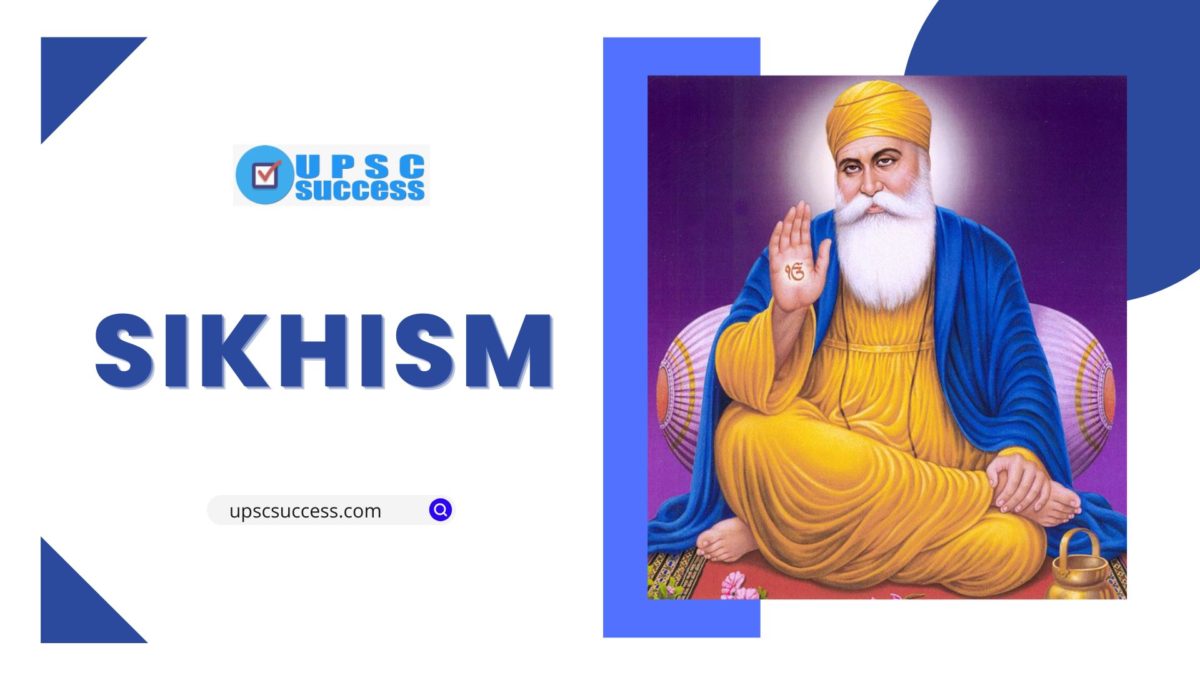Contents
Sikh Gurus
Guru Nanak (1469 – 1539)
- Guru Nanak is the 1st Sikh Guru and founder of the Sikhism, who was also a Nirguna Bhakti Saint.
- He was born in a village of Talwandi (now called Nankana, in Pakisthan), on the banks of the river Ravi in 1469.
- Guru Nanak was opposed to all distinctions of caste.
- He is also said to have met Babur.
- After his death, his followers called themselves ‘Sikhs’ and a new religious sect, Sikhism, was founded.
- Nanak was followed by nine Sikh gurus.
Guru Angad
- The 2nd guru, started the Gurumukhi script.
- He started the tradition of Mall Akhara
Guru Amardas
- The 3rd guru, began the institution of langar (commonkitchen) to abolish the caste system.
- Preached against the Hindu society’s sati system and advocated widow-remarriage
- Asked Akbar to remove the pilgrim’s tax for non-Muslims
Guru Ramdas
- 4th guru, was given the site of Harmandir at Amritsar by Akbar.
- Guru Ramdas also laid the foundation stone of Chak Ramdas or Ramdas Pur, now called Amritsar.
- Composed the four Lawans (stanzas) of the Anand Karaj, a distinct marriage code for Sikhs.
Guru Arjan
- 5th guru, compiled 1st official edition of Sikh scripture Adi Granth,
- Later it expanded into the Guru Granth Sahib.
- Guru Arjan completed the construction of the Harmandir at Amritsar.
- He installed the Adi Granth inside the new temple in 1604.
- Guru Arjan was arrested asked to convert to Islam under the orders of Jahangir.
- He refused, was tortured and executed in 1606.
Guru Hargobind
- 6th guru, who was also imprisoned by Jahangir for ten years.
- Longest tenure as Guru.
- He transformed Sikhs into a militant community, established the Akal Takht, and fortified Amritsar.
- Defeated a Mughal army at Sangrama.
- Took the title of Sachcha Padshah.
- Shifted his headquarters to Kartarpur.
- Guru Hargobind was the proprietor of the concept of miri and piri
Guru Tegh Bahadur
- The 9th guru, was executed by Aurangzeb
Guru Gobind Singh
- 10th and last guru
- He passed the Guruship of the Sikhs to the Guru Granth Sahib.
- Established the Khalsa in 1699 at Anandpur Sahib and organised the Sikhs into a military sect.
- All his sons were killed by a Mughal army at Sirhind, and he was also slain by a Pathan in revenge.
- The orthodox Sikhs are also distinguished by the five kakka (the five k’s), kesa (top knot), kachha (short drawers), kara (iron bangle), kanga (comb) and kirpan (sword)

